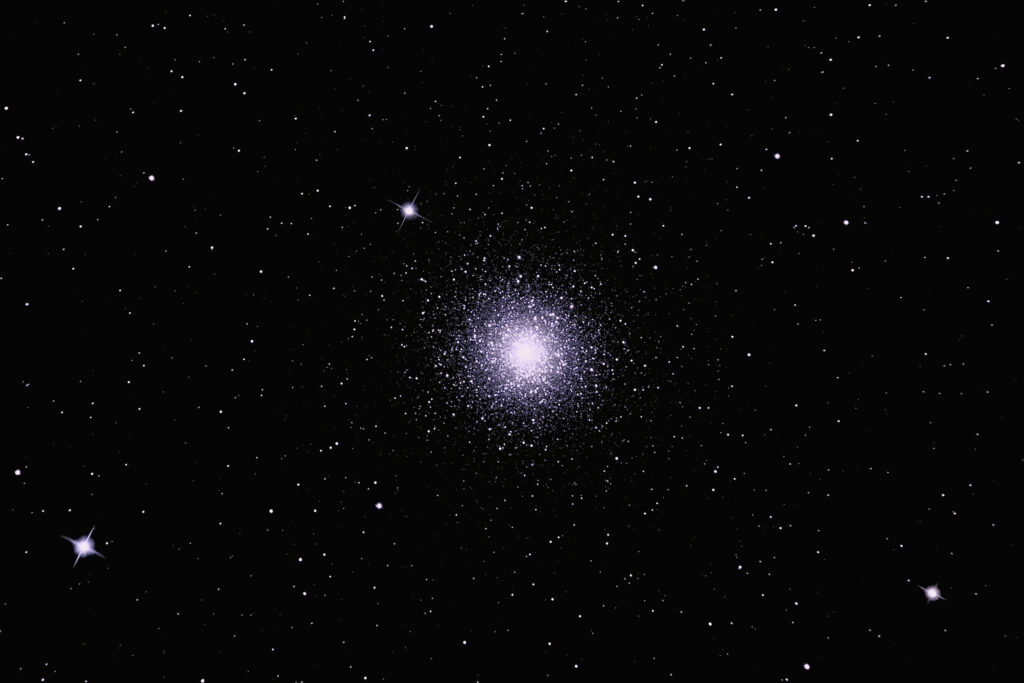M15 is one of the most impressive examples of a globular star cluster in our Milky Way galaxy. Globular clusters are compact groups of several hundred thousand to a million or so stars that are gravitationally linked. Nearly 150 such clusters have been detected in our galaxy, but the actual number must be at least twice this number because we cannot detect clusters on the opposite side of the galactic center.
In the 1930s astronomer Harlow Shapley was able to prove that all visible globular star clusters are located in the galactic halo, far from the galactic center, and form a "bowl." He deduced, correctly, that the center of this bowl was in fact the center of our galaxy. This proved conclusively that the Earth was not the center of the galaxy, but rather is located near the edge of the galaxy on one of the spiral arms.
Easily seen high overhead in the northern hemisphere as a small, circular blur in binoculars during the summer months, M15 is resolved into a swarm of stars in moderately-sized amateur telescopes, revealing its true nature. In fact, this cluster contains perhaps a half a million stars, crowded into an area that is about 210 light years in diameter.
A spherical cluster with a radius of 210 light years would have a total volume of 40 million cubic light years, which yields an average separation between stars of 4 light years (about the distance of our Sun to the nearest star) given a total population of 500,000 stars. The actual mass of the cluster has been computed to be 350,000 solar masses, but, since our Sun is a comparatively large star, the actual number of stars in M15 must exceed this number.
Like our solar system, M15 is orbiting the center of our galaxy, but is on another spiral arm some 35,000 light years away.
Would the sky appear to be filled with bright stars like our Sun on a planet in this cluster? That is a common assumption, but in fact the sky would look about the same as it does from the Earth, since, with a stellar separation of 4 light years, the neighboring stars in the cluster would appear as pinpoints of light.
Globular Star Cluster M15 in Pegasus
Date Taken:August 30, 2008
Location Taken: Conditions of Location:FWHM 1.8
Equipment Used:14.5" Ritchey-Chretien telescope, SBIG STL11000 CCD camera, Astrodon RGB filters, TCC, PIR, remote guide head used with Takahashi Sky90 for autoguiding, T-Point used for polar alignment (required for each imaging session due to my portable setup).
Processing Used:6x5 minutes luminance, 6x90 seconds red, green, and blue (total exposure time 1 hour), combined in Maxim and processed in Photoshop
Distance from Location:35,000 light years
Constellation:Pegasus (the "winged horse")
Other Link:
